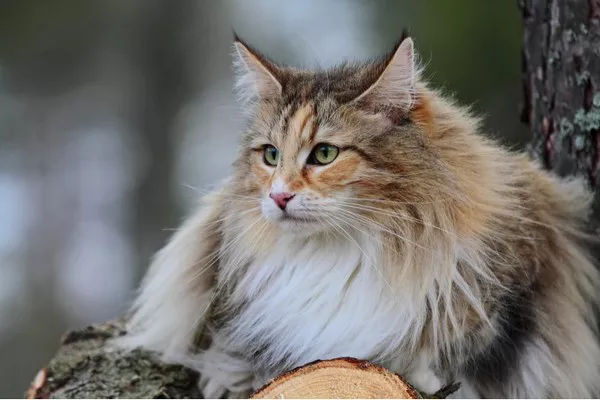Norwegian Forest Cats are known for their majestic appearance, luxurious fur, and captivating personalities. If you’re considering bringing one of these enchanting felines into your home, you might be wondering if they’re lap cats—those cuddly companions who love to curl up on your lap for hours. In this article, we’ll explore the lap cat tendencies of Norwegian Forest Cats and compare their nature with other cat breeds to help you understand their unique preferences and behaviors.
The Lap Cat Phenomenon
1. Understanding Lap Cats
Lap cats are those endearing feline friends that seek out human laps for comfort, warmth, and companionship. Their behavior reflects a strong bond with their owners and a desire for physical closeness.
2. Lap Cats’ Benefits
Having a lap cat can be incredibly rewarding. The mutual affection and connection between the cat and owner contribute to reduced stress, anxiety, and a general sense of well-being.
Norwegian Forest Cats: A Glimpse into Their Nature
1. Majestic Appearance
Norwegian Forest Cats boast a striking appearance with their bushy tails, tufted ears, and water-resistant coats—a reflection of their heritage in the rugged Norwegian wilderness.
2. Independent Nature
Despite their regal looks, Norwegian Forest Cats are known for their independent streak. They have a history of fending for themselves in harsh environments, which influences their self-sufficiency.
Lap Cat Tendencies of Norwegian Forest Cats
1. Individual Variation
While not all Norwegian Forest Cats are lap cats, some do exhibit lap cat tendencies, showing affection and seeking out laps for cuddles and attention.
2. Relaxed Moments
Norwegian Forest Cats may not be constant lap sitters, but they do have moments of relaxation when they enjoy being close to their owners. These cats might choose to curl up beside you rather than on your lap.
Comparing with Other Breeds
1. Ragdoll Cats
Ragdoll Cats are renowned for their lap cat behavior. They tend to go limp when picked up and often seek out laps for extended cuddle sessions, making them quintessential lap cats.
2. Siamese Cats
Siamese Cats are known for their social and vocal nature. While they may not be traditional lap cats, they often form strong bonds with their owners and enjoy being part of the action.
3. Maine Coon Cats
Maine Coon Cats, like Norwegian Forest Cats, have a history of outdoor living. While not strictly lap cats, they often develop close relationships with their owners and enjoy their presence.
Factors Influencing Lap Cat Behavior
1. Early Socialization
Early interactions and socialization play a significant role in shaping a cat’s behavior. Cats exposed to positive human interactions from a young age are more likely to become lap cats.
2. Personality and Temperament
Individual personalities vary among cats of the same breed. Some Norwegian Forest Cats may have a strong lap cat inclination, while others may prefer observing from a distance.
Encouraging Lap Cat Behavior
1. Building Trust
Creating a safe and nurturing environment is key to encouraging lap cat behavior. Gradually building trust with your Norwegian Forest Cat can lead to moments of closeness.
2. Positive Associations
Associate lap time with positive experiences. Offer treats, gentle petting, and soothing words while your cat sits on your lap to create a positive association with the experience.
Embracing Your Cat’s Nature
1. Respect Individuality
While Norwegian Forest Cats might not be typical lap cats, it’s essential to respect their individuality. Embrace their unique behaviors and preferences that make them special.
2. Strengthening the Bond
Whether your Norwegian Forest Cat becomes a dedicated lap cat or enjoys occasional moments of closeness, the bond you share is a testament to the unique relationship between you and your feline companion.
Conclusion
In conclusion, Norwegian Forest Cats exhibit individual lap cat tendencies that may vary from one cat to another. While not all Norwegian Forest Cats are lap cats in the traditional sense, many do enjoy moments of affection and closeness with their owners. Comparing their behavior with other breeds highlights the diversity of feline personalities and preferences. By understanding your Norwegian Forest Cat’s background, personality, and early experiences, you can better predict their lap cat tendencies and provide them with an environment that nurtures their comfort and contentment. Ultimately, the special bond you share with your Norwegian Forest Cat is built on mutual trust, respect, and the unique companionship that makes every feline friend extraordinary in their own way.


























